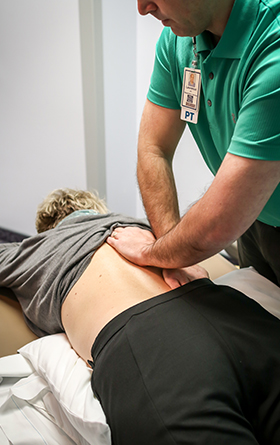Manual Therapy
Manual therapy uses different hands-on methods, special instruments and natural body movements to treat injuries and chronic conditions. It can:
 Improve range of motion
Improve range of motion- Increase blood flow to help injured areas heal
- Reduce pain
- Reduce soft tissue and joint inflammation
- Relax tense and spastic muscles
Conditions We Treat
- Carpal tunnel syndrome
- Cervical pain
- Fibromyalgia
- Joint sprain
- Lower back pain
- Lymphedema
- Muscle strain
- Painful scars
- Plantar fasciitis
- Repetitive motion injuries
- Tennis elbow
- Pain in the outer thigh and knee tissues (IT band syndrome)
- Post-fracture pain
- Women’s health (postmastectomy and Caesarean scarring)
Types of Manual Therapy
Your physical or occupational therapist evaluates your condition and works with you to find the most effective technique(s).
Cupping. The therapist places special suction cups on the skin for a few minutes The suction increases blood flow, which helps with healing.
Instrument-assisted manual therapy. The therapist uses a special instrument and gentle pressure to find and break up scar tissue in the body.
Joint mobilization therapy. The therapist gently moves affected joints through their natural resistance to stretch and strengthen the tissue around the bone.
Manual lymphatic drainage therapy. The therapist uses gentle pressure to increase the flow of lymph fluid and help it drain.
Myofascial release. The therapist applies gentle pressure to areas of tightness in the connective tissue that runs from head to toe.
Soft tissue mobilization therapy. The therapist applies gentle pressure and stretching movements to injured skin, muscles, nerves, tendons or other soft tissues.